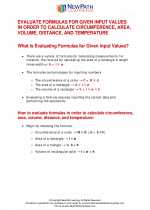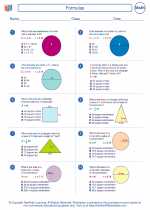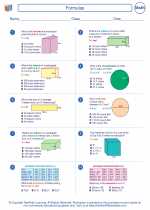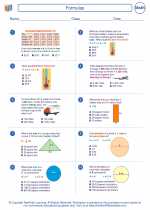Series
In mathematics, a series is the sum of the terms of a sequence. A series can be finite or infinite. The sum of a finite series is called a finite sum, while the sum of an infinite series is called an infinite sum.
Types of Series
There are several types of series, including arithmetic series, geometric series, and harmonic series. Each type of series has its own distinct pattern and method for finding the sum of its terms.
Arithmetic Series
An arithmetic series is a series in which each term is obtained by adding a constant difference to the previous term. The sum of the terms of an arithmetic series can be found using the formula:
Sn = n/2 * (a1 + an)
Where Sn is the sum of the first n terms, n is the number of terms, a1 is the first term, and an is the nth term.
Geometric Series
A geometric series is a series in which each term is obtained by multiplying the previous term by a constant ratio. The sum of the terms of a geometric series can be found using the formula:
Sn = a1 * (1 - rn) / (1 - r)
Where Sn is the sum of the first n terms, a1 is the first term, r is the common ratio, and n is the number of terms.
Harmonic Series
A harmonic series is the sum of the reciprocals of the terms of a sequence. The sum of the terms of a harmonic series can be expressed as:
Sn = 1 + 1/2 + 1/3 + ... + 1/n
Convergence and Divergence
When dealing with infinite series, it is important to understand whether a series converges (has a finite sum) or diverges (has no finite sum). Tests such as the divergence test, comparison test, ratio test, and root test can be used to determine the convergence or divergence of a series.
Study Guide
- Identify the type of series (arithmetic, geometric, harmonic).
- Determine the common difference or ratio for the series.
- Find the sum of the series using the appropriate formula.
- For infinite series, use convergence tests to determine convergence or divergence.
Practice solving problems involving different types of series and use convergence tests to determine the behavior of infinite series. Understanding the properties and behavior of series is crucial for various areas of mathematics and its applications in real-life scenarios.
.◂Math Worksheets and Study Guides Sixth Grade. Formulas

 Activity Lesson
Activity Lesson
 Worksheet/Answer key
Worksheet/Answer key
 Worksheet/Answer key
Worksheet/Answer key
 Worksheet/Answer key
Worksheet/Answer key
